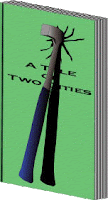
Next up in the Geology Through Literature section is Our Town by Thorton Wilder. You can check out a downloadable packet at the site with directions, answers, and lessons learned. See just the directions and questions below.
Using Our Town by Thorton Wilder
Geology is not only useful for a scientific purpose but it can also be used as a scene setter. That is how it is used in Our Town. To give the audience a sense of time and place the narrator of the story describes the history and location of the town including the geology and anthropology. The purpose of this project is to take his description and determine whether it is valid or not. Or could this just be a case of the author taking geological and anthropological words and imputing them into a story, whether they make sense or not?
Project Description
1. Read Our Town by Thorton Wilder.
2. Write down all of the important sentences and phrases that describe both the geology of the town and it’s location on a map. You will use this information along with some references from the internet to determine what is correct and what is made up.
3. Use that information to answer the following questions:
Questions
1. What is the name of the town and the state that the story takes place in?
2. Does this town actually exist?
3. What town is closest to the coordinates given in the text? Is it the town named? Note: The coordinates are given in NAD27 which is an old system but the difference to the more recent NAD83 is only about 10 meters so it should not matter.Use the coordinates from the text on the website:
3. What town is closest to the coordinates given in the text? Is it the town named? Note: The coordinates are given in NAD27 which is an old system but the difference to the more recent NAD83 is only about 10 meters so it should not matter.Use the coordinates from the text on the website:
You have to place a negative “-” in front of the longitude
since it is in the Western Hemisphere, otherwise you will
get a result in Russia.
4. The play mentions four different types of rocks that the town lies on. List the rock types and their respective ages. Note: One does not have a given age.
5. Place the rocks in the cross section below with the oldest on the bottom and the youngest on top. Assume the one rock layer without an age is the second youngest.
6. Does the comment “I may say it’s some of the oldest land in the world.” make sense regarding the rock that they are speaking about? Why or why not? I recommend using a geologic time scale for this one.
7. Using the geology map at http://www.nhgeology.org/nhbedrock.htm (there is a larger pdf on the site) does the age of the granite make sense? Why or Why not?
8. Using the above geology map what is the oldest age the granite could actually be. Hint: You should probably look up what rocks make up the Massabesic Gneiss Complex and the Rye Complex.
9. Assuming the town is southwest of Manchester, is it possible that one of these rock units could be what was actually described?
10. Which one would be most likely?
11. Rearrange the rock units with the corrected age of the granite below. Assume the rock unit without an age is now the youngest.
12. Is the basalt mentioned logical? You might want to check out http://vulcan.wr.usgs.gov/LivingWith/VolcanicPast/. Why or why not?
8. Using the above geology map what is the oldest age the granite could actually be. Hint: You should probably look up what rocks make up the Massabesic Gneiss Complex and the Rye Complex.
9. Assuming the town is southwest of Manchester, is it possible that one of these rock units could be what was actually described?
10. Which one would be most likely?
11. Rearrange the rock units with the corrected age of the granite below. Assume the rock unit without an age is now the youngest.
12. Is the basalt mentioned logical? You might want to check out http://vulcan.wr.usgs.gov/LivingWith/VolcanicPast/. Why or why not?
13. The text mentions some fossils. Which of the four units could be the likely source of the fossils? There may be multiple correct answers.
14. Anthropology – What is the name of the Amerindian tribe mentioned in the story that originally occupied the region?
15. What is the range this tribe actually covered and does it cover the area given in the story?
16. What state is mentioned where the marble building stone comes from?
17. Can you get marble here?
18. If you can get marble here what is a formation it could have come from? Keep in mind the transportation distances, closer to the town the better. There may be multiple correct answers.
I recommend using this site: http://www.anr.state.vt.us/dec/geo/resourceinx.htm to find where they dig for the marble.
And this site: http://www.anr.state.vt.us/dec/geo/centmap.htm to find the name of the formations.
I recommend using this site: http://www.anr.state.vt.us/dec/geo/resourceinx.htm to find where they dig for the marble.
And this site: http://www.anr.state.vt.us/dec/geo/centmap.htm to find the name of the formations.
Any comments or suggestions (or corrections) please let me know.
No comments:
Post a Comment
Due to the large number of spam comment (i.e. pretty much all of them). I have turned off commenting. If you have any constructive comments you would like to make please direct them at my Twitter handle @Jazinator. I apologize for the inconvenience.
Note: Only a member of this blog may post a comment.